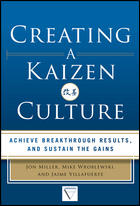Some time ago, I spoke to a group about organizational culture. Considering what is happening today it might be appropriate to present a few thoughts to a broader audience. Each person can determine how it might apply to their circumstances.
Organizations are not much different than individuals. They, like individuals, have a core DNA to direct their efforts and nurture their culture. Organizations need to stress three attributes: values, ethics, and integrity. These should make up the core DNA but all too often we hear of organizations taking “high-risk, high-reward” approaches, compromising their organization’s core values and ultimately their credibility.
As children, our parents and teachers taught us right from wrong, good from bad. They set up a system of values and consistently enforced them. Over time, we forged our own moral compass and learned to model our behavior based on our own internal code of ethics. Organizations should apply that same approach in designing standard ethical guidelines for conducting business. This should not be hard to fathom as it is people, not unfeeling robots, at the heart of organizations.
The creation of a standard code should begin at the top. While this sounds hierarchal, if the leader does not embrace the ethical standards of the company, there is little hope that those in the organization will develop an ethical culture in return.
Once the leaders of the organization develop a set of ethical codes, they must be implemented. Every person in the organization should be equipped with the knowledge to handle moral dilemmas using standard guidelines that do not deviate or bend upon preference. This is where many ethical codes tend to fall apart.
Core DNA values act as guideposts to appropriate business behavior. Creating value requires the courage to have fierce conversations intended to help the business progress. The focus on values includes a desire to win and envisioning the future—not whining and wallowing in the past.
A well-thought-out corporate mission, vision and core values statement are important in driving business strategy. To make core values and strategies relevant, it is critical they are embraced by the senior leadership and clearly communicated throughout all levels of the organization. One method for ensuring everyone is on board is by building a ‘values evaluation’ into the annual performance review and through continuous education. As an organization evolves, so do its core values.
To create sustainable business value that will endure for decades, organizations must set standards and then abide by those codes. This may mean walking away from business partnerships if core values are in conflict. While this approach initially feels like going against the grain, most often, the companies with the highest ethical values generally are the winners over a sustained period of time.
A common myth is that an organization cannot simultaneously increase sales, protect its interests and be ethically sound. But many would argue that each component is reliant on the other. By creating a standard set of ethical guidelines, organizations are laying the groundwork to protect their interests. While gains are not always quantifiable in the short term, these organizations will be building a foundation of prosperity for years to come.
Without a definitive set of guidelines, organizations will inevitably try to increase the bottom line by any means necessary—even compromising values. As with individuals, organizations must never compromise values to get ahead. Regretfully there are several modern-day examples. The effects of Bernie Madoff still loom large, and we all know how that story ended.
To be successful, organizations must synchronize values with desired outcomes. If organizations have a commitment to the appropriate core values (respect, integrity, trust, teamwork, passion for serving customers) but not the right leadership and strategy, they are doing a disservice to customers and other stakeholders. The emphasis should be on doing both.
Certainly, ethics should be at the core of what makes a business run—it should be a mandatory ingredient to the DNA. An organization’s leadership cannot turn a blind eye when it comes to values, or they might just end up being another front-page disaster. Q









